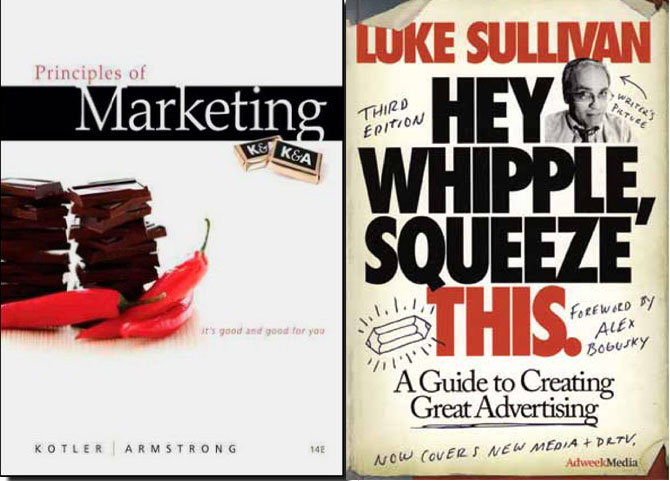2 Must-Reads for Marketers/Advertisers


Some people sell things. Marketers and advertisers also change things for the better.
If you keep this basic tenet in mind, branding is going to be a cinch. You will find yourself designing campaigns that endure, leave an impression, drive not only sales but also add value for your customers and to society.
Think of brands like Nike, Lifebuoy, Amul, Coca Cola, Apple, Dabur and Google. They’re brands that have endured because they have created value.
If you want to be a master marketer/advertiser, you must get your basics right. For that you need a strong foundation and reading the following books in the conjunction is a lethal idea.
- Principles of Marketing – Philip Kotler & Gary Armstrong
The building blocks of marketing! If you place an order for this book, ensure that it’s the latest edition updated for mobile, digital and social media marketing.
While there are many dissenters who claim that this book is a tad dated, Principles of Marketing continues to serve as the Bible for marketers all over the globe. Armed with the knowledge provided in this book, you will never go wrong with your basics.
Based on the overarching idea of creating value for the customers, the massive popularity of this book is testimony to its effectiveness. This book will teach you how to create socially responsible and consumer driven campaigns by analyzing the market environment and gaining valuable customer insight. It will also give you insights on how to position and consolidate your brand.
- Hey Whipple Squeeze This – Luke Sullivan
This book is one of the holy grails of advertising, especially for the ones in the creative departments. Written by ace copywriter Luke Sullivan, this book is a fun and light read about communication, creativity, branding, marketing and advertising.
If you’re wondering about the title, it’s a tribute to Mr. Whipple, a ridiculous mascot who drove record sales for Charmin, an American toilet paper brand.
The tribute is not a positive one. Mr. Whipple was popular no doubt, but he was also voted as one of television’s most annoying characters. Somehow, his annoying presence created a strong impression that drove sales for the brand. But Mr. Whipple’s arguably counterproductive branding has been likened by the author, to spitting on the table and grabbing the attention of a board of executive – it grabs the attention, but it doesn’t create value. That’s whats post-liberalization me-too brands do.
The book also sheds light upon the life in the advertising work environment and exposes the awkward sibling rivalry between marketers and creatives; it educates you about many of the nuances of branding through beautiful analogies and fun anecdotes. You’ll learn about campaign designing from Sullivan’s analysis of various successful and unsuccessful campaigns, like 7 Up’s de-positioning of Coke in the consumer’s minds, by positioning itself as the “Uncola”, or Mr. Whipple’s branding failure, etc.
Marketers often have to work in capacity as advertisers and vice versa. And these books are the perfect combination for a strong foundation.
